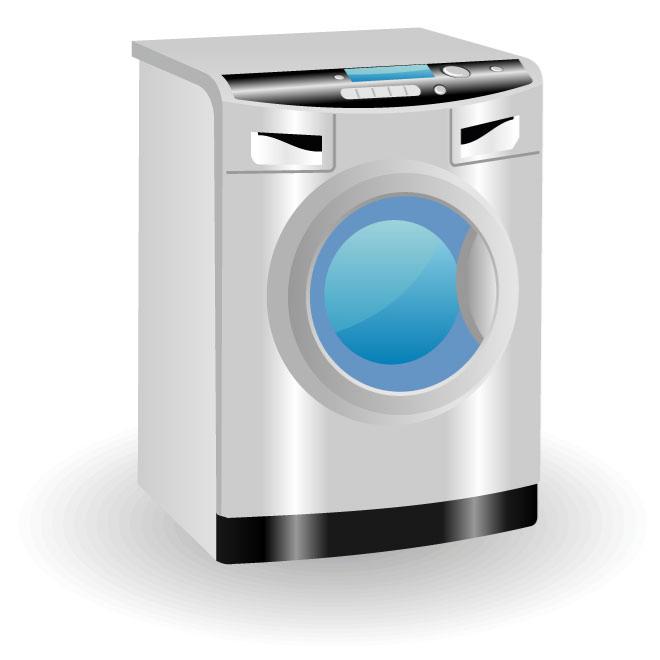Introduction
Definition of a faulty washing machine
A faulty washing machine refers to a washing machine that is not functioning properly or experiencing issues that hinder its normal operation. It can exhibit a range of signs and symptoms that indicate a problem, such as excessive noise during operation, leaks, failure to start or complete a cycle, uneven spinning, or a failure to properly clean clothes. Identifying these signs is crucial in order to address the underlying issue and ensure the washing machine operates efficiently.
Importance of identifying signs of a faulty washing machine
Identifying signs of a faulty washing machine is of utmost importance. By recognizing these signs early on, you can prevent further damage to your appliance and avoid costly repairs. A faulty washing machine can lead to ineffective cleaning, water leakage, excessive noise, or even electrical hazards. Being aware of these signs allows you to take prompt action and seek professional assistance if needed. Additionally, identifying the signs of a faulty washing machine can help you make informed decisions about repair or replacement, ensuring the longevity and efficiency of your appliance. Therefore, understanding the importance of identifying these signs is essential for maintaining the functionality and safety of your washing machine.
Overview of common issues with washing machines
Washing machines are essential appliances in every household, but they can develop faults over time. It is important to be aware of the common issues that can arise with washing machines to ensure their proper functioning. Some typical signs of a faulty washing machine include excessive noise during operation, leaks, failure to drain or spin, and inconsistent water temperature. These problems can be caused by various factors such as worn-out parts, clogged filters, or electrical issues. Regular maintenance and timely repairs can help prevent further damage and extend the lifespan of your washing machine.
Visible Signs of a Faulty Washing Machine

Leaking water
Leaking water is one of the most common signs of a faulty washing machine. If you notice water pooling around the machine or dripping from underneath, it is a clear indication that there is a problem with the appliance. This issue can be caused by various factors such as a damaged hose, a loose connection, or a malfunctioning pump. It is important to address this issue promptly to prevent further damage to the machine and potential water damage to your home. A professional technician should be contacted to diagnose and repair the source of the leak.
Excessive noise during operation
Excessive noise during operation is one of the typical signs of a faulty washing machine. If you notice unusually loud banging, grinding, or squeaking sounds coming from your washing machine while it is in use, it could indicate a problem. This could be caused by a loose drum, worn-out bearings, or a faulty motor. It is important to address this issue promptly as continued operation with excessive noise can lead to further damage and potentially expensive repairs. If you experience excessive noise during operation, it is recommended to contact a professional technician to diagnose and fix the problem.
Inconsistent spinning or agitation
Inconsistent spinning or agitation is a common sign of a faulty washing machine. When you notice that your washing machine is not spinning or agitating consistently, it could indicate a problem with the motor or the belt. This can result in uneven distribution of water and detergent, leading to ineffective cleaning of your clothes. Additionally, inconsistent spinning or agitation can also cause excessive wear and tear on the machine’s components, potentially leading to further damage. If you experience this issue, it is recommended to have your washing machine inspected and repaired by a professional to ensure optimal performance and longevity.
Performance Issues

Clothes not getting cleaned properly
When your clothes are not getting cleaned properly, it could be a sign of a faulty washing machine. There are several reasons why this may happen. Firstly, the water level in the machine may not be sufficient to effectively wash the clothes. Secondly, the detergent dispenser may be clogged, preventing the detergent from properly reaching the clothes. Additionally, the agitator or drum inside the machine may be malfunctioning, resulting in inadequate agitation or spinning. If you notice that your clothes are still dirty or have residue after a wash cycle, it is advisable to have your washing machine inspected and repaired by a professional.
Longer than usual washing cycles
One common sign of a faulty washing machine is longer than usual washing cycles. If you notice that your washing machine takes significantly more time to complete a cycle than it used to, it could indicate a problem. This could be due to a malfunctioning timer, clogged filters, or issues with the water inlet valve. It is important to address this issue promptly to prevent further damage to your washing machine and ensure efficient cleaning of your clothes.
Frequent interruptions or error messages
Frequent interruptions or error messages can be a common indication of a faulty washing machine. When you constantly experience interruptions during the washing cycle or receive error messages on the machine’s display, it is a sign that something is not functioning properly. These interruptions can range from the machine stopping abruptly in the middle of a cycle to displaying error codes that indicate specific issues. It is important not to ignore these signs as they could be early warnings of more serious problems. If you frequently encounter interruptions or error messages, it is recommended to consult a professional technician to diagnose and resolve the issue.
Electrical and Power Problems

Tripping circuit breakers
Tripping circuit breakers is one of the typical signs of a faulty washing machine. When a washing machine is not functioning properly, it can cause an overload in the electrical circuit, leading to the tripping of circuit breakers. This can happen due to various reasons, such as a short circuit, damaged wiring, or a malfunctioning motor. If you notice that your washing machine consistently trips the circuit breakers, it is essential to address the issue promptly to avoid further damage and ensure the safety of your home’s electrical system.
Flickering lights when the washing machine is in use
Flickering lights when the washing machine is in use can be a sign of a faulty appliance. This issue may indicate an electrical problem, such as a loose connection or a damaged wiring. It is important to address this issue promptly to prevent further damage and potential safety hazards. Consulting a professional technician or contacting the manufacturer for assistance is recommended to diagnose and resolve the problem effectively.
Power fluctuations or sudden shut-offs
Power fluctuations or sudden shut-offs can be a common sign of a faulty washing machine. If you notice that your washing machine is experiencing frequent power fluctuations or sudden shut-offs during the washing cycle, it may indicate an underlying issue. These power interruptions can disrupt the washing process and lead to incomplete or ineffective cleaning. Additionally, power fluctuations or sudden shut-offs can also pose a safety risk as they may result in electrical malfunctions or even potential damage to the washing machine. Therefore, it is important to address this issue promptly by consulting a professional technician to diagnose and repair any electrical or mechanical faults in your washing machine.
Water Supply and Drainage Problems

Low water pressure
Low water pressure is one of the typical signs of a faulty washing machine. When the water pressure is low, the machine may not be able to fill up with enough water to properly clean the clothes. This can result in inadequate cleaning and rinsing, leaving behind dirt and detergent residue on the garments. Additionally, low water pressure can also cause the washing machine to take longer to complete a cycle, leading to increased energy consumption. If you notice consistently low water pressure when using your washing machine, it is important to address the issue promptly to ensure optimal performance and avoid potential damage to the appliance.
Slow or incomplete drainage
Slow or incomplete drainage is one of the typical signs of a faulty washing machine. If you notice that the water is not draining properly or the machine takes longer than usual to drain, it could indicate a problem. This issue can be caused by a clogged drain hose, a malfunctioning pump, or a blocked filter. It is important to address this problem promptly to prevent further damage to the machine and ensure efficient washing cycles.
Water not filling or draining properly
One of the common signs of a faulty washing machine is when it fails to fill or drain water properly. If you notice that the water is not filling up to the desired level or that it takes a long time for the water to drain out, it could indicate a problem with the machine. This issue can be caused by a clogged or faulty water inlet valve, a malfunctioning drain pump, or a blocked drainage hose. It is important to address this problem promptly as it can affect the overall performance of the washing machine and lead to further damage if left unresolved.
Safety Concerns

Burning smell or smoke
One of the typical signs of a faulty washing machine is a burning smell or smoke. If you notice a strong burning odor or see smoke coming from your washing machine, it is important to take immediate action. This could indicate a serious problem with the electrical components or wiring of the machine. Continuing to use a washing machine that emits a burning smell or smoke can be dangerous and may lead to a fire hazard. It is recommended to unplug the machine and contact a professional technician to diagnose and repair the issue.
Visible sparks or electrical arcing
Visible sparks or electrical arcing is a clear indication of a faulty washing machine. When you notice sparks or electrical arcing coming from your washing machine, it is important to address the issue immediately. This could be caused by a faulty electrical connection or a malfunctioning component within the machine. Ignoring this problem can lead to further damage or even pose a safety risk. It is recommended to consult a professional technician to diagnose and repair the issue to ensure the safe and efficient operation of your washing machine.
Overheating of the washing machine
Overheating of the washing machine is a common sign of a faulty appliance. When a washing machine overheats, it can lead to various issues such as damage to the internal components, reduced efficiency, and even the risk of fire. One of the main causes of overheating is a malfunctioning thermostat, which fails to regulate the temperature properly. Additionally, clogged vents or blocked airflow can also contribute to the overheating problem. It is important to address the issue of overheating promptly to prevent further damage and ensure the safe operation of the washing machine.
Getting high quality professional help in repairing Washing Machines nowadays is quite difficult, I have decided to standardize the procedures in order to provide the client with the highest quality of work that would exceed the expectations if not just match it.
Click Here to get in touch with us
If you have any questions: Email us
Thank you for voting for us as the Best Washing Machine Repair company in UAE
If you are looking for Tools to use, These are our recommendations

I am an Engineer who is very interested in building a platform that ensures highest standards of quality to be maintained in all forms of maintenanc services and the unification of them in a seemless way.
